A Comprehensive Guide to South Sea Pearl Grading: Everything You Need to Know

The stunning South Sea pearl comes from the warm, turquoise waters of the South Pacific.
Admired for its unmatched size, luster, and rarity, this precious gem has captured the hearts of jewelry enthusiasts worldwide.
However, as with any valuable commodity, not all South Sea pearls are created equal.

Understanding the complex process of pearl grading is essential for those seeking to buy or sell these prized jewels.
This in-depth guide to South Sea pearl grading will help you learn all you need to know, from the factors influencing a pearl's grade to the market values associated with each grade.
Whether you're an avid collector, a discerning jeweler, or an admirer of natural beauty, this guide will provide valuable insight into South Sea pearls.
Pearl Grading Basics
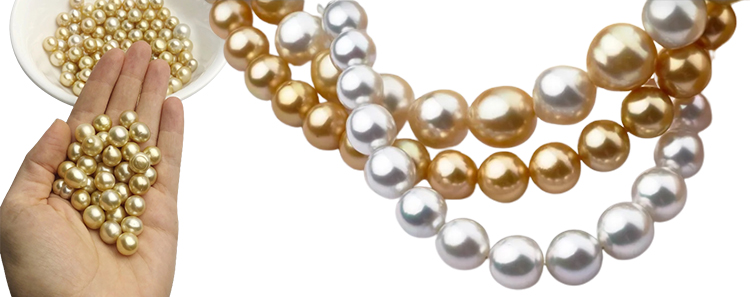
Pearl grading is a process that carefully evaluates the quality of pearls based on various factors.
This assessment allows pearls to be categorized into different grades, each with unique characteristics and values.
Factors Considered in Pearl Grading
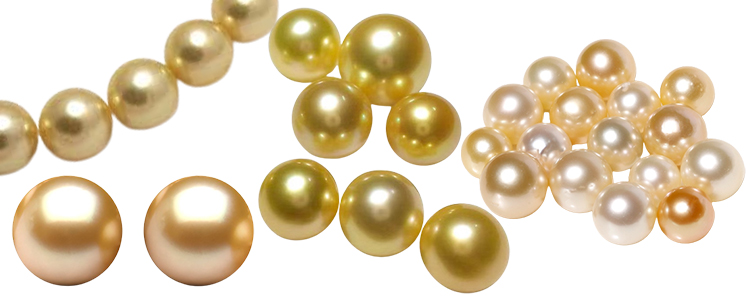
When grading pearls, several factors are considered.
Luster is the most critical factor, as it indicates the quality of the pearl's nacre and reflects the quality of light reflection on the pearl's surface.
Surface quality is also essential, as it reveals the presence of any blemishes, spots, or other irregularities on the surface of the pearl.
Size, shape, and color are also factors evaluated in pearl grading, as they affect the overall beauty and desirability of the pearl.
Importance of Pearl Grading in Value Determination

Pearl grading is essential in determining the value of pearls, and the highest quality pearls are typically given the AAA grading.
This designation signifies that the pearls have excellent luster, are free of blemishes, and have a round, symmetrical shape.
AAA-graded pearls are the most sought-after and valuable, representing the highest quality.
South Sea Pearl Grading Scale
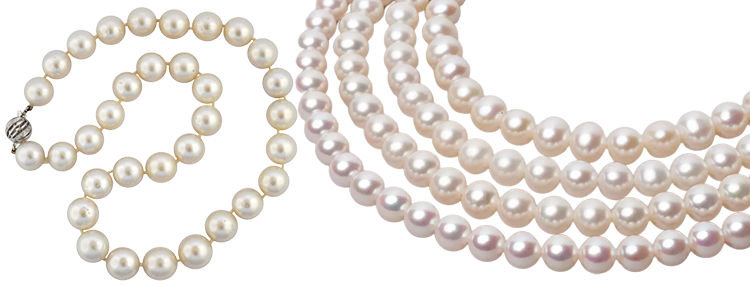
The South Sea Pearl Grading Scale is a system used to evaluate the quality of South Sea pearls.
This grading system is used to classify South Sea pearls into different grades, each with its characteristics and value.
The South Sea Pearl Grading Scale ranges from A to AAA, with AAA being the highest quality grade.
This system considers various factors, including luster, surface quality, size, shape, color, and nacre quality.
South Sea pearls that receive an AAA grade have the highest luster, minor blemishes, and a round, symmetrical shape.
Compared to other pearl grading scales, the South Sea Pearl Grading Scale is similar to the Tahitian Pearl Grading Scale, which ranges from A to AAA.
However, the factors evaluated in each grading system may vary slightly, as different pearls have different characteristics considered valuable.
Grading Factors for South Sea Pearls

When grading pearls, several factors are considered.
● Lustre: This refers to the shine and reflectivity of the pearl's surface. High-quality pearls have a bright, reflective luster, while lower-quality pearls may appear dull or lackluster.

● Surface Quality: This factor evaluates the presence of blemishes, spots, or other irregularities on the pearl's surface. High-quality pearls have few to no blemishes, while lower-quality pearls may have visible flaws that affect their appearance.
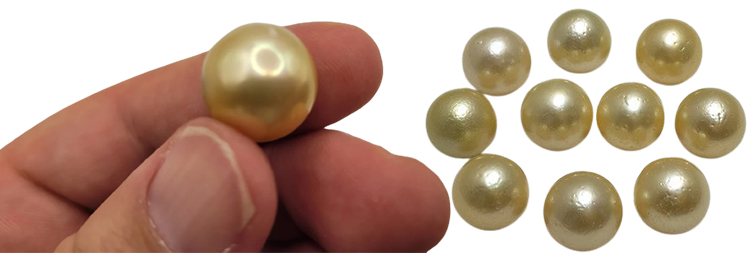
● Shape: Pearls can come in various shapes, from round to teardrop to baroque. Round pearls are the most highly valued, while irregular pearls may have a lower value.
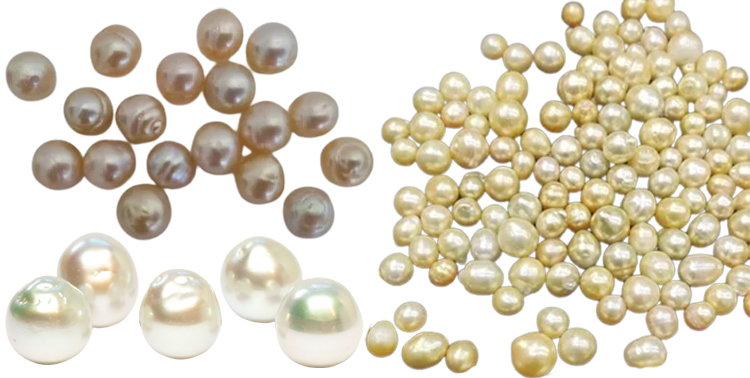
● Size: The size of the pearl is also a factor in grading. Larger pearls are usually more valuable than smaller pearls.
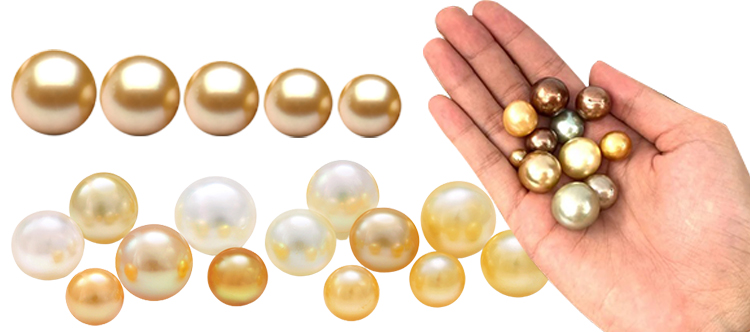
● Colour: The color of a pearl can be white to black, with several shades in between. Some colors, such as the highly prized golden South Sea pearls, are rare and more valuable than others.

● Nacre Quality: The thickness and quality of the nacre, a substance that makes up the pearl, is also evaluated in grading. Thick, high-quality nacre produces a more durable and lustrous pearl.
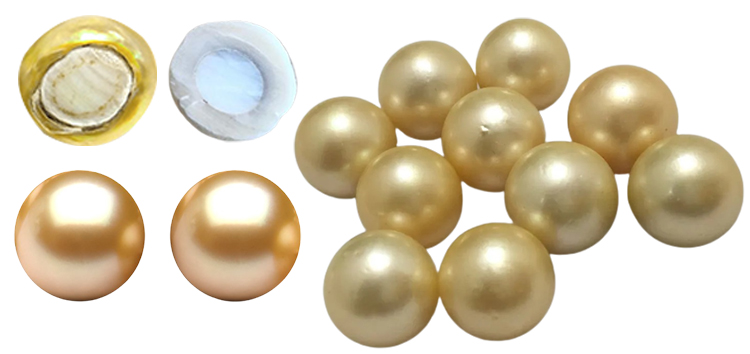
Factors Affecting South Sea Pearl Grading
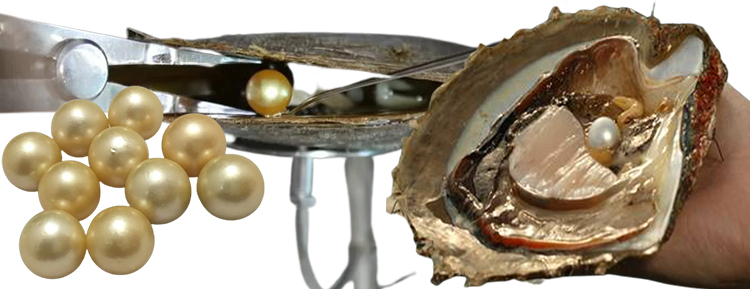
Several factors can affect the grading of South Sea pearls, including their origin, farming techniques, environmental conditions, and harvesting methods.
Here's an overview of these factors:
Origin:
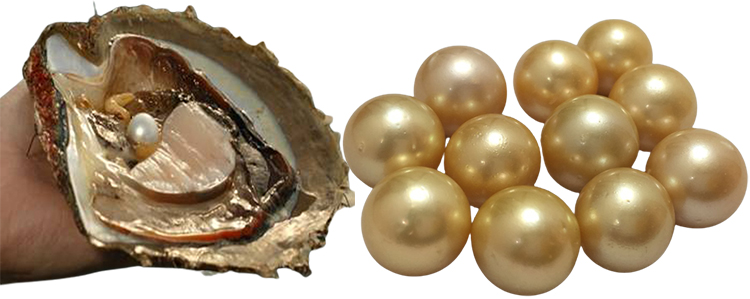
The origin of a pearl can have a significant impact on its quality and value.
South Sea pearls are typically more extensive and more valuable than other types, partly due to the unique environmental conditions in which they are grown.
Farming Techniques:

How pearls are farmed can also affect their quality and grading.
Factors like the type of oyster used, the size of the nucleus inserted into the oyster, and the length of time the pearl is allowed to grow can all impact the final result.
Careful attention to farming techniques can result in more round, symmetrical, and lustrous pearls with fewer surface imperfections.
Environmental Conditions:
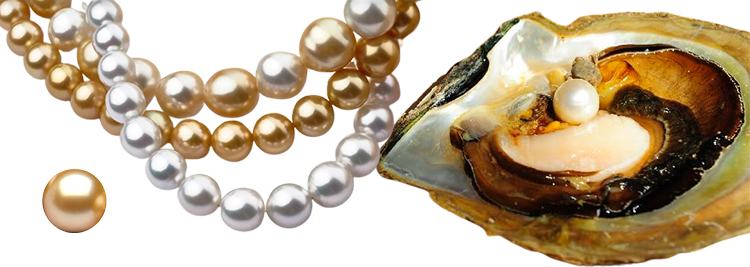
The water quality and environmental conditions in which pearls are grown can also impact their grading.
Water temperature, salinity, and nutrient levels can all affect the growth and development of the oyster and pearl and the quality of the resulting pearl.
Ideal conditions for pearl farming include clear, calm waters with a consistent temperature and nutrient supply.
Harvesting Methods:
How pearls are harvested can also affect their grading.
Careful handling and gentle extraction can help to prevent damage to the pearl's surface and preserve its luster and shape.
On the other hand, improper handling can result in scratches, dents, or other blemishes that can lower the pearl's overall quality.
Grades of South Sea Pearls

South Sea pearls are graded based on various factors, including their luster, shape, size, color, and surface quality.
The grading system ranges from A to AAA, with AAA being the highest quality grade.
Here's an overview of the different grades of South Sea pearls:
Top-Tier Grades (AAA and AA+):
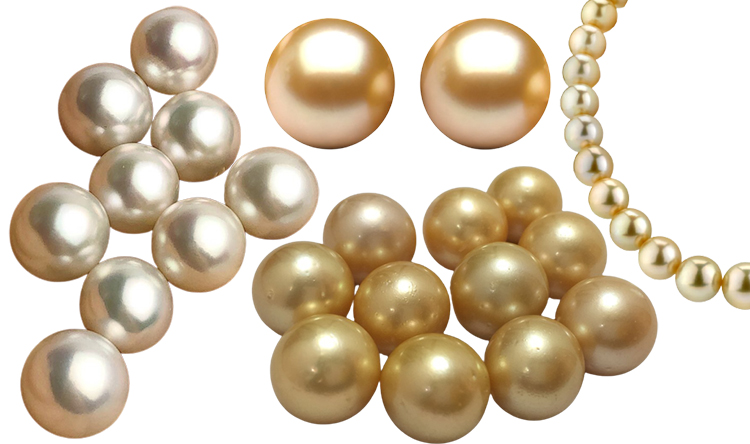
South Sea pearls that receive the AAA or AA+ grade are considered to be of the highest quality.
These pearls are typically large, round, or near-round and have a high luster and minimal surface blemishes.
The color of these pearls is also highly desirable, with shades ranging from white to golden to deep golden.
Mid-Tier Grades (AA and A+):
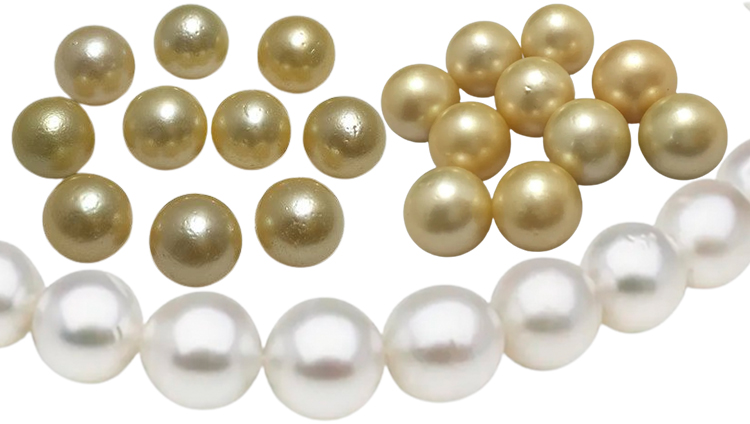
South Sea pearls that receive the AA or A+ grade are still considered good quality but may have slight imperfections or irregularities.
These pearls may have some surface blemishes, slight variations in color, or a slightly off-around shape.
However, they still have a good luster and can be quite beautiful.
Low-Tier Grades (A and Below):

South Sea pearls that receive an A grade or below are considered lower quality.
These pearls may have noticeable surface blemishes, an irregular shape, or a dull luster.
The color of these pearls may also be less desirable, with shades ranging from cream to yellow to brown.
South Sea Pearl Grading Process
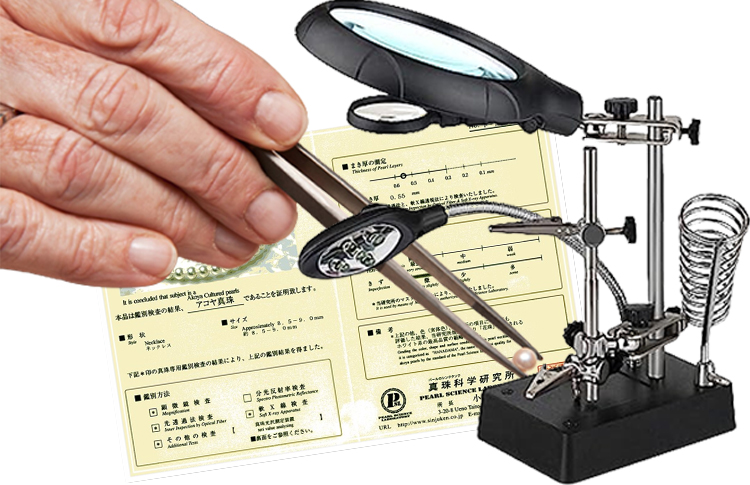
South Sea pearls are graded professionally by experts in a controlled environment.
Here's an overview of the South Sea pearl grading process:
Who Grades South Sea Pearls?
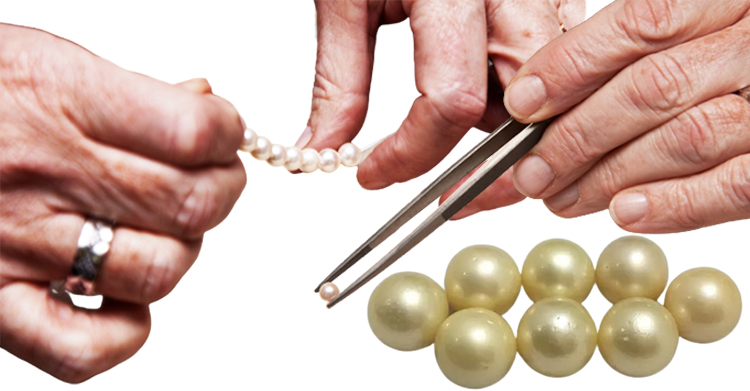
South Sea pearls are graded by professionals who work for pearl grading organizations or dealers.
These individuals have been trained in the various factors used to evaluate pearls and have extensive experience identifying and grading different pearls.
Grading Process
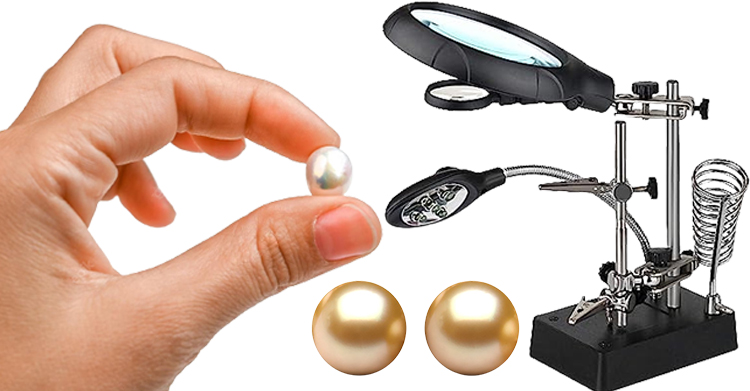
The grading of South Sea pearls involves carefully evaluating their luster, shape, size, color, and surface quality.
Pearls are typically evaluated in a controlled environment, using special lighting and magnifying equipment that allows the grader to see the pearl in detail.
Certification and Verification
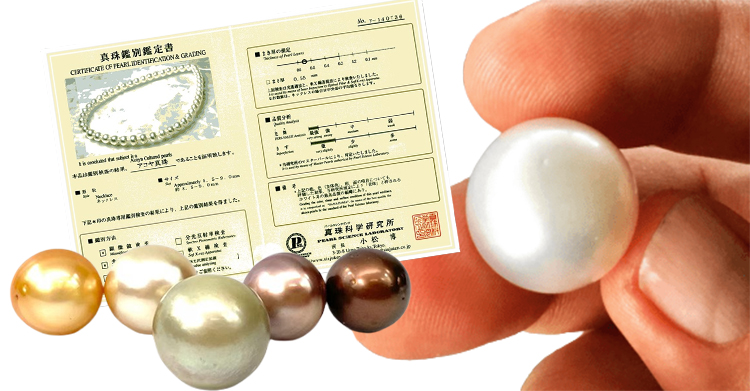
Once a South Sea pearl has been graded, it may be certified by an independent organization to verify its quality and authenticity.
Certification may involve additional testing to confirm the pearl's origin and physical and chemical properties.
This can be important for buyers who want to ensure that they are purchasing a high-quality, genuine South Sea pearl.
How South Sea Pearl Grading Affects Pricing
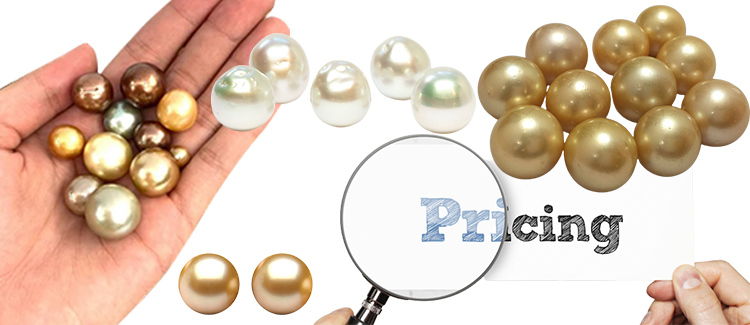
The grading of South Sea pearls plays a significant role in determining their price.
Factors Affecting South Sea Pearl Pricing
Several factors can affect the pricing of South Sea pearls, including their size, shape, color, luster, surface quality, and overall rarity.
The origin of the pearl can also be a factor, as South Sea pearls from certain regions may be more highly valued than others.
How Grading Affects Pricing

The grading of South Sea pearls helps to establish a standard of quality and consistency, which can, in turn, affect their pricing.
Higher-grade pearls command higher prices which are considered rare and valuable.
Conversely, lower-grade pearls may be less expensive, as they are more common and have more visible blemishes or imperfections.
Value of High-Grade South Sea Pearls
South Sea pearls that receive the highest grades, such as AAA and AA+, can be precious.
These pearls are highly prized for their large size, round shape, and exceptional luster and are often used in high-end jewelry designs.
Because of their rarity and beauty, high-grade South Sea pearls can command high prices, sometimes exceeding tens of thousands of dollars per pearl.
Tips for Buying High-Quality South Sea Pearls

South Sea pearls are prized for their beauty and rarity, and buying high-quality pearls can be a worthwhile investment.
Here are some tips for buying high-quality South Sea pearls, as well as some advice on what to look for and where to buy them:
Importance of Buying High-Quality South Sea Pearls
High-quality South Sea pearls offer exceptional beauty and can be valuable investments that appreciate value over time.
When purchasing South Sea pearls, looking for consistent pearls with few blemishes or imperfections is essential.
This can help ensure the pearls retain their value and beauty for many years.
What to Look for When Buying South Sea Pearls
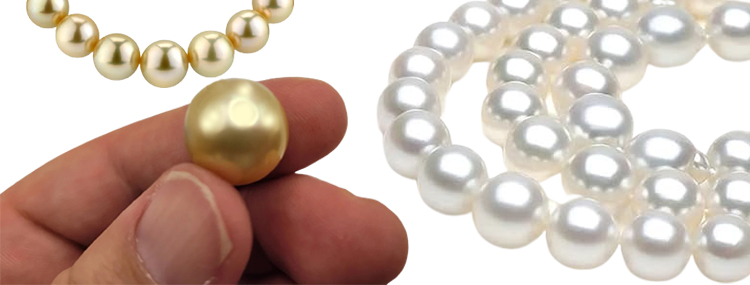
When shopping for South Sea pearls, it's essential to look for pearls that are round, lustrous, and have a consistent color.
The surface of the pearl should be free of visible blemishes, and the pearl should feel heavy and solid in your hand.
Additionally, buying pearls from a reputable dealer who can provide information about the pearls' origin, quality, and grading is essential.
Where to Buy High-Quality South Sea Pearls
South Sea pearls can be purchased from various sources, including specialty jewelry stores, online retailers, and auction houses.
When purchasing pearls, it's essential to do your research and purchase from a reputable dealer who can provide you with information about their quality and grading.
Look for dealers with a good selection of high-quality pearls and a proven track record of selling authentic, high-value pearls.
Caring for South Sea Pearls

South Sea pearls are valuable and beautiful treasures that require proper care to maintain their luster and beauty.
Here are some tips for cleaning, storing, and maintaining your South Sea pearls:
How to Clean South Sea Pearls

To clean your South Sea pearls, gently wipe them with a soft, damp cloth.
Avoid harsh chemicals or cleaners, which can damage the pearls' delicate surface.
If your pearls become heavily soiled, you can soak them in a mild, soapy solution for a few minutes, but rinse them thoroughly and pat them dry with a soft cloth afterward.
Storing South Sea Pearls
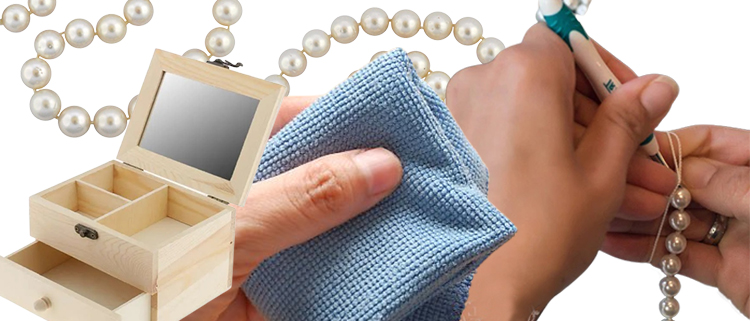
When not worn, South Sea pearls should be kept in a soft pouch or jewelry box to protect them from scratches and other damage.
Avoid storing them with other jewelry, as metal and hard surfaces can easily scratch the pearls.
Additionally, store them away from direct sunlight, which can cause the pearls to fade or discolor over time.
Maintaining the Beauty and Luster of South Sea Pearls
To maintain the beauty and luster of your South Sea pearls, handling them carefully and avoiding exposure to harsh chemicals or extreme temperatures is essential.
Avoid wearing them while swimming or showering, as chlorine and other chemicals can damage the pearls.
Additionally, having your pearls restrung every few years is essential, as the silk thread can stretch and weaken over time, increasing the risk of breakage.
South Sea Pearls FAQs
What are South Sea Pearls?
South Sea pearls are large, lustrous pearls produced by the Pinctada maxima oyster, living in the warm waters of the South Pacific.
What is Pearl Grading?
To determine their quality and value, Pearl grading evaluates pearls based on their size, shape, color, luster, surface quality, nacre thickness, and other factors.
What are the Factors Considered in South Sea Pearl Grading?
The factors considered in South Sea pearl grading include the pearl's size, shape, color, luster, surface quality, nacre thickness, and overall quality.
What are the Grades of South Sea Pearls?
South Sea pearls are typically graded from AAA (highest quality) to A (lowest quality).
How is South Sea Pearl Grading Done?
South Sea pearl grading is typically done by trained professionals who evaluate each pearl based on its characteristics and assign it a grade based on a standardized grading system.
How Does South Sea Pearl Grading Affect Pricing?
Higher grades of South Sea pearls are more valuable and command higher prices than lower grades, as they are considered higher quality.
How do I Know if I am Buying High-Quality South Sea Pearls?
To ensure you buy high-quality South Sea pearls, look for well-matched pearls in size, shape, and color with a smooth, lustrous surface and a thick layer of nacre.
It's also essential to buy from a reputable dealer who can provide certification and verification of the pearls' quality and origin.
How do I Care for My South Sea Pearls?
To care for your South Sea pearls, clean them gently with a soft, damp cloth, store them in a soft silk pouch or jewelry box when not being worn, and avoid exposing them to harsh chemicals or extreme temperatures.
Conclusion
South Sea pearl grading is essential for buyers and sellers to determine the quality and value of these gems.
The AAA-A grading scale is commonly used for South Sea pearls, with top-tier grades being the most valuable.
Understanding South Sea pearl grading is essential when buying or selling these gems, as it affects their pricing.
Proper cleaning and storage techniques can help ensure these gems last a lifetime.
Buying high-quality South Sea pearls is a worthwhile investment that can bring joy and beauty to your life.
So, take the time to learn about South Sea pearl grading and make an informed purchase.


+K1001+L100-1-700x700.jpg)
+K1001+L100-2-700x700.jpg)
+K1002+L1008-1-700x700.jpg)
+K1002+L1008-2-700x700.jpg)
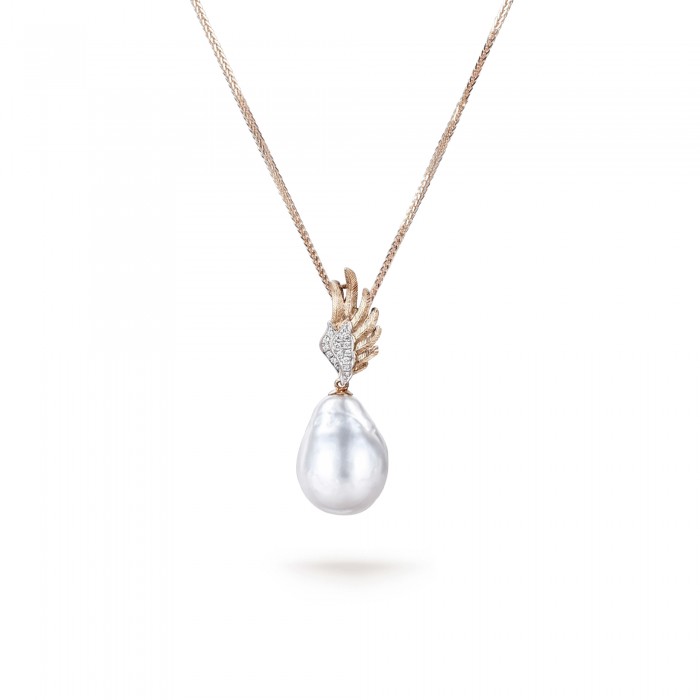
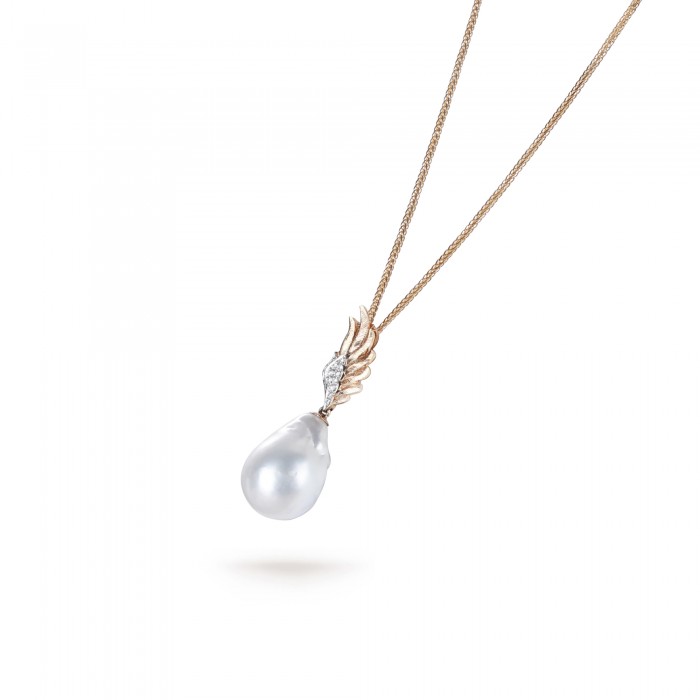
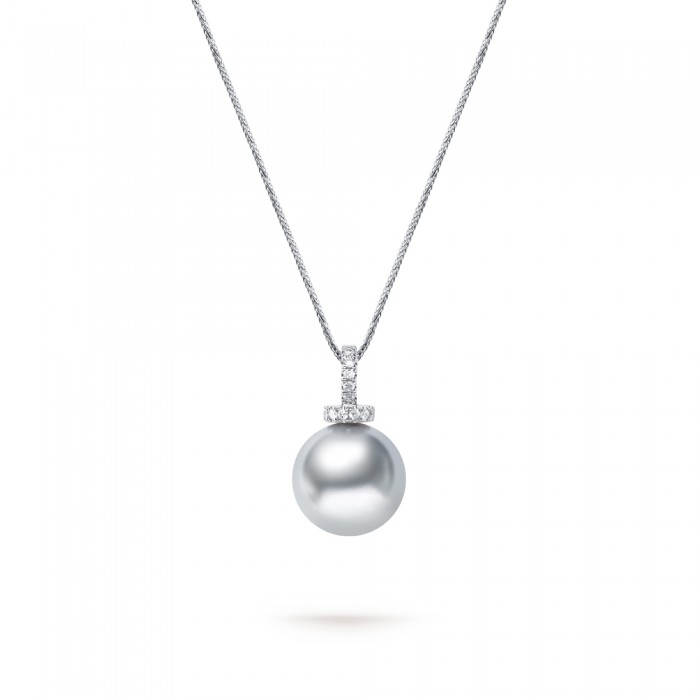
Leave a Comment